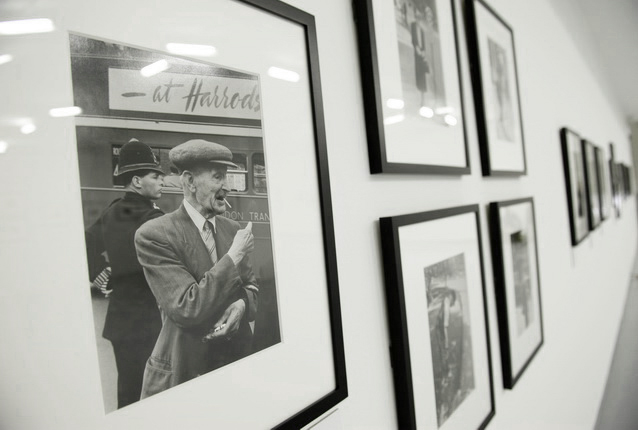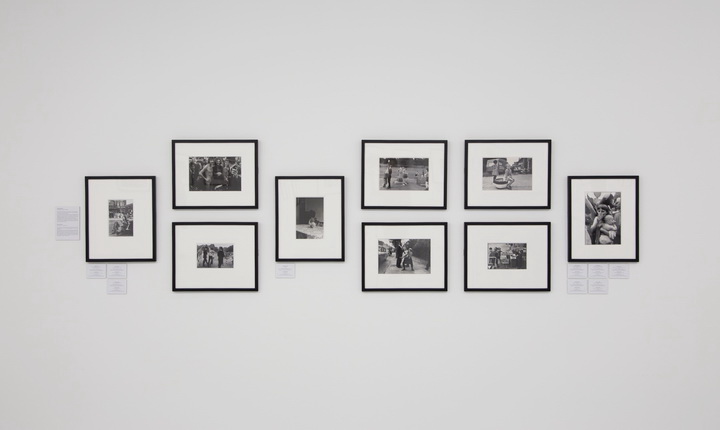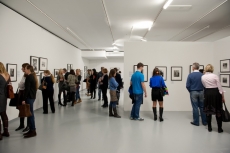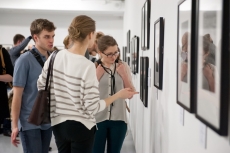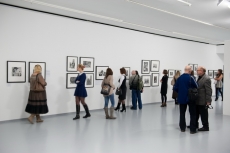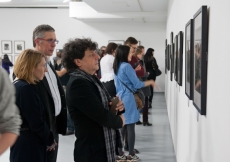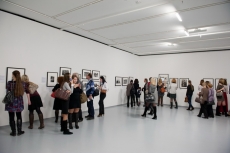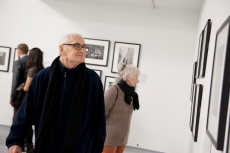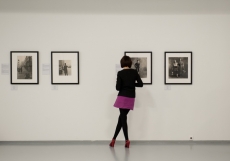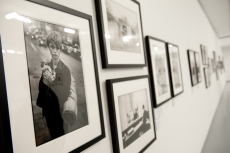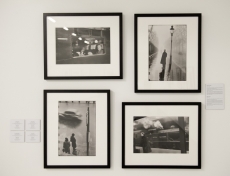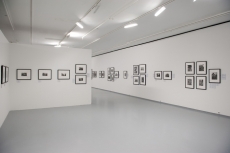Another London
International Photographers Capture City Life 1930 – 1970
Moscow, 19.02.2014—20.04.2014
exhibition is over
Share with friends
The ‘Another London’ exhibition presented by Tate (London) comprises works by classic international photographers of non-British origin, bringing a view of London ‘from outside’. Jacques Henri Lartigue, Henri Cartier-Bresson, Martine Franck, Robert Frank, Dora Maar, Emil Hoppé, Elliot Erwitt, Bill Brandt, Irving Penn, Marc Riboud, Wolfgang Suschitzky — masterpieces by these and many other photographers included in the exhibition were recently shown to great acclaim at Tate and donated to the museum by Louise and Eric Franck.
For the press
‘Another London’ is the highlight project of the Photobiennale 2014, the central theme of which is ‘Britain and British Photography in Focus’. This exhibition allows us to see the UK capital and its transformation over almost half a century, to delight in British eccentricity that is sometimes more obvious through the eyes of an outsider, to immerse ourselves in contrasts peculiar to the English way of life — from Buckingham Palace and Hyde Park to an urban market — to observe idlers and luminaries, princes and paupers... ‘Another London’ also provides us with an encyclopaedic history of world photography from the 1930s to 1970s.
Luminaries of world photography converged on London throughout the 20th century, and their work was a reflection of the city and its inhabitants. A few came for brief periods as a photojournalist, some were refugees and others chose to make London their home. Their photographs give an idea of how London is viewed by the ’stranger’, the foreigner, and present a picture as varied as the city itself. Here the canonical ’good old England’ — streets covered in smog, red double-decker buses and men in bowler hats — exists side-by-side with evidence of growing cultural diversity.
Since its inception with the very first images by Daguerre, the history of photography has told the story of city life. But it has been in the twentieth century, beginning in earnest with the modernist movements of the 1920s, that photography can be seen to have claimed the city as its own subject par excellence. Since the period that facilitated such phenomena as the Paris of Brassai and, later, the New York of William Klein (MAMM exhibited both photo series at the Photobiennale-2012).
From the 1930s to 1970s it was the dynamism of London that attracted people, as it does today, and photographers were also intrigued by a specific quality of light unique to this city. Elliot Erwitt enthused: ‘I think London is a very picturesque city. In fact, I think I went to London more frequently than I went down town while living in New York. I took a lot of pictures’.
It is very important that all these artists who came to London from different countries brought to its photographic image a ‘non-British’ aesthetic and introduced this to the international modernist style. Dora Maar, perhaps best known as a model and muse for Pablo Picasso, was also an outstanding artist and photographer in her own right who shared a darkroom with Brassai. Her evident skill with a camera is apparent in ‘Pearly King’ (1935), portraying one of the London street traders who traditionally wear clothes sewn with mother-of-pearl buttons to raise money for charity. The modernist style of Horacio Coppola, represented in this exhibition by his work from the 1930s, was formed in the 1920s in Buenos Aires and honed in Europe in the 1930s, when he joined the Bauhaus group of photographers.
Illustrated journals made a major contribution to the formation of London’s international portrait and were important in popularising the modernist aesthetic in photography. From the 1930s onwards they were increasingly focused on pictorial narrative, using pictures to tell a story. This tendency was more advanced in Germany and France than Britain; we see this, for example, in Henri Cartier-Bresson’s images of George VI’s coronation. Bresson visited London in 1937 on an assignment for a French magazine, but instead of photographing the king he was fascinated by the crowds waiting for the coronation procession.
Nonetheless these shots were his first published photo-reportage. Another example of a photojournalist who introduced cross-Channel innovation to the image of London is Felix Man (his 1945 photo ‘The Lights go up in London’ features in the exhibition). Already a prominent photojournalist in Germany, he fled to Britain from the Nazis in 1934. Immediately after his arrival he co-founded the Weekly Illustrated magazine and went on to work for Picture Post, the leading British illustrated journal. After the war Picture Post became internationally popular and commissioned many young photographers from overseas, in particular Marc Riboud, who came to London in 1954 to take on assignments (the exhibition includes 9 shots Riboud took during this trip).
At the same time some photographers, primarily those who had the means to survive alone, came to the UK of their own accord. One example was Emil Hoppé, born in Germany in 1878 and therefore a generation older than most of the photographers showcased in this exhibition. Hoppé was sufficiently well established to publish from 1932 onwards a series of photographic books with views of London, his second home. The great Lartigue was quintessentially independent and apparently photographed London more for personal pleasure than publication. ‘Bibi in London’ (1926), a photo portrait of his wife, may be seen as a documentary record of London at that period, and also as a snapshot from the ‘family album’.
After the war photographers who came to London independently to work included Robert Frank, who made several visits and brought his entire family for the winter of 1951 to 1952. His photographs reveal an interest in the contrasts of the British class system. Others were Lutz Dille, who was born in Germany and arrived to make a film about Speakers’ Corner, and later, Al Vandenberg.
Some visitors to London came to study as well as to work, as they do today. This is true of Inge Morath, an Austrian native who later married the eminent American writer Arthur Miller (represented here by the photo ‘Mrs Eveleigh Nash’, 1953), and James Barnor, who moved to London from Ghana in 1959. Despite the commercial success of his portrait studio in Accra, the Ghanaian capital, in London Barnor was obliged to make a new start. But he maintained some of the international contacts already established, and in his shot of charismatic heavyweight Muhammad Ali there is a sense of privileged access.
The overseas origins of photographers that came to London in the post-war years facilitated the rise of picture agencies, which in turn flourished with increasing professionalism of the medium and operated with an international pool of photographers. The legendary photo agency Magnum established in 1947 (in Paris and New York, with Henri Cartier-Bresson among the founders) set high standards for the work of photojournalists, and also their employers. Many of the artists featured in the exhibition became members of this agency, including Elliot Erwitt and Marc Riboud (both served as president), Ernst Haas and Martine Franck (since the 1970s), to name just a few.
The ‘Another London’ exhibition is not only the history of a city as represented in photography. It conveys the history of a photographic community and the bizarre interweaving of its heroes’ destinies, facilitated to some extent by the city of London itself, one of the 20th century’s liveliest cultural megapolises.

